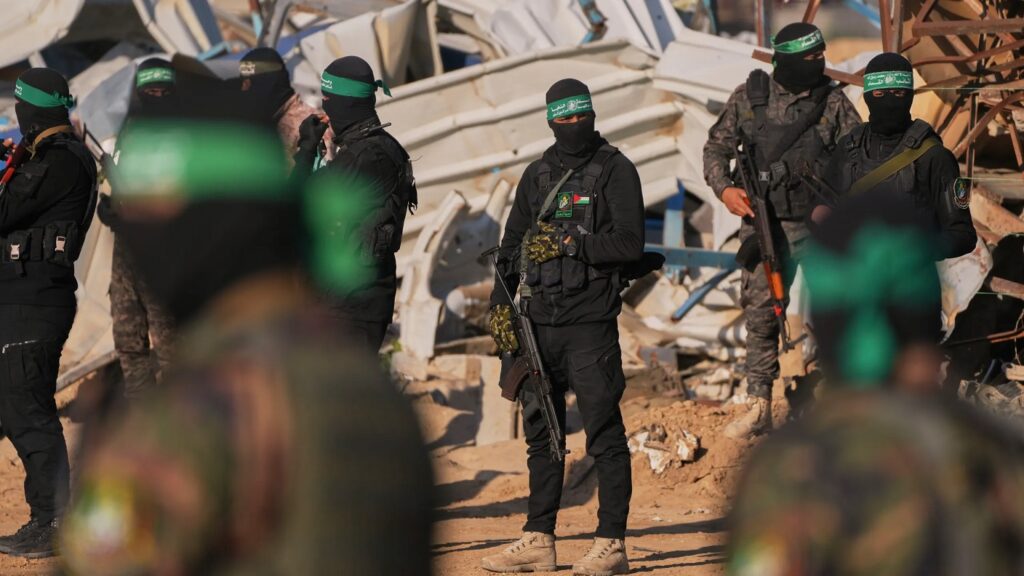Three Israeli men that were taken hostages by Hamas on 7 October 2023 were released on Saturday in exchange for 183 Palestinian prisoners according to the ceasefire-hostage deal signed between Israel and Hamas.
The first pictures of the hostages, Or Levy, Ohad Ben Ami and Eli Sharabi, shocked the Israeli public and reminded it about survivors from a Nazi concentration camp. They looked frail and emaciated, after 491 days of captivity, when they were paraded by Hamas before they were handed over to the Red Cross.
Their spirit improved onboard the Israeli helicopters that brought them home but they risk severe health problems according to the health authorities. During their captivity, they suffered isolation, starvation and torture in Hamas’ tunnels.
Ohad Ben Ami was lucky to reunite with his wife, who was released in the first hostage deal in November 2023, and his three daughters. Or Levy did not know until his return that his wife had been killed in the Nova music festival. Eli Sharabi’s wife and two daughters were killed in their home at Kibbutz Be’eri. His brother was also taken captive but is confirmed dead.
Among the 183 Palestinian prisoners that were freed on Saturday, 18 were serving life sentences for deadly terrorist attacks. A majority of the prisoners had been captured by Israeli forces during their offensive in Gaza and had been held in a temporary prison camp where they reportedly had been mistreated.
As part of the ceasefire deal, Israeli forces withdrew overnight from its remaining positions in the Netzarim corridor which divided Gaza. After the withdrawal, Palestinians can return without any checks to the north of Gaza from where they were displaced. There, they will face a terrible reality as the area was almost totally devastated during the war.
Ceasefire in two phases
After the latest release, 73 hostages remain in Gaza, of which at least 34 are believed to be dead. In total, 33 hostages are expected to be released during the first phase of the ceasefire until beginning of March. According to the deal, the first six-weeks phase should be followed by a second phase which should lead to the release of the remaining hostages and effectively end the war.
The talks on the second phase should have started already last week but have been delayed and are now expected to restart on Monday or Tuesday in Doha, the capital of Qatar. An Israeli team that flew to Doha yesterday has no real mandate to negotiate until the Israeli government will meet after Prime Minister Benyamin Netanyahu’s return from the US where he met President Trump.
Netanyahu is pressured by his far-right finance minister to suspend the talks and continue the war in Gaza or risk the dissolution of his government. He was also thought to be pressured by Trump to fully implement the agreement. Overall, the assessment was optimistic that the ceasefire would hold and the EU did also step up its action in the region.

Ohad Ben Ami and his wife in a helicopter on their way to a hospital, credit: IDF spokesperson
Trump’s “real estate” vision
However, Trump’s surprising announcement on a “real estate” vision for Gaza at their joint press conference last Tuesday has upended the situation and nothing is certain any longer. In line with his other plans for Greenland, Panama and Canada, he proposed that the US would take over Gaza, rebuild it to a new Riviera and “relocate” its population to other countries, at least temporarily.
He motivated his idea that it was not possible to live in Gaza during the many years it would take to rebuild it from the ground. After his idea was rejected by Arab and European countries, he seems to have retracted from it and never meant to send American troops to Gaza. Netanyahu, who called Trump “the greatest friend Israel has ever had in the White House”, welcomed his thinking “outside the box”.
An Israeli expert, Professor Kobi Michael, explained last week that Trump’s proposal should rather be seen as a bargaining chip in the talks with Saudi Arabia about normalisation of its relations with Israel and a defense pact with the US. Such a deal, which the parties were close to reach before 7 October, would result in a new regional architecture.
“Trump didn’t say that the Palestinians should be forced out of Gaza,” he added. According to polls before the outbreak of the war on 7 October, more than 40 % the population wanted to leave the overpopulated and destitute Gaza Strip. The war destructed most buildings and infrastructure. He doubts that people can live there during the reconstruction with Hamas remaining in power.
The families of the hostages fear that Trump’s proposal might derail the implementation of the ceasefire and endanger the lives of the remaining hostages still alive.
Netanyahu, who until now has refused to allow an alternative to Hamas, seems to believe that that he can both eliminate Hamas and return all hostages. In a statement on Saturday after the release, he said that, “President Trump agrees with me completely: We will do everything to return all of the hostages, but Hamas will not be there (in Gaza).”
The EU has not officially commented on Trump’s idea but an EU spokesperson stated on Thursday that it has taken note of his comment on Gaza. “The EU is fully committed to the two-state solution, which we believe is the only path to a long-term peace for both Israelis and Palestinians. Gaza is an integral part of a future Palestinian state and there should be no forced displacement of Palestinians.”


